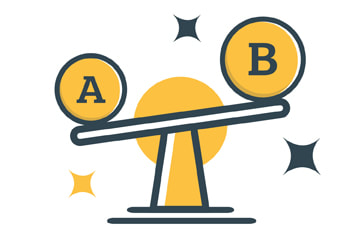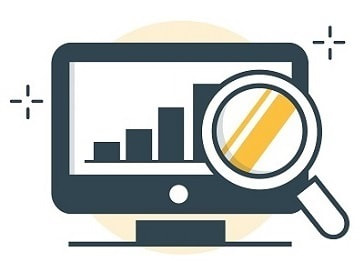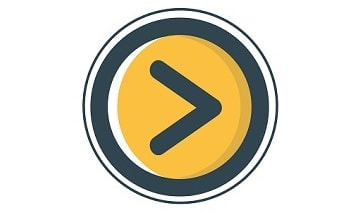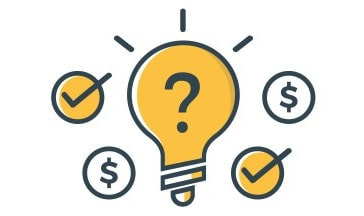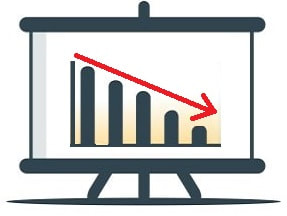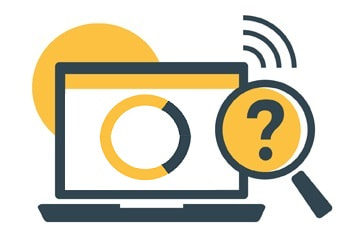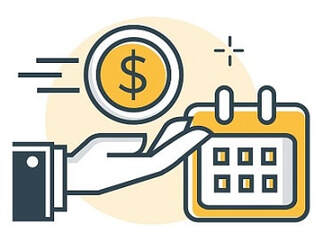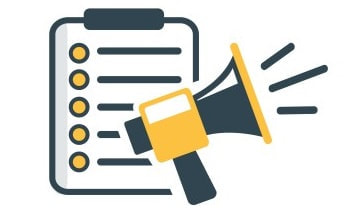What Do I Do With My KiwiSaver When I Retire?
"What should I do with my KiwiSaver when I retire" is a question for the ages. This guide, the first of its kind in New Zealand, extensively explains your options and helps you decide what is best for your everyday life.
Updated 19 July 2024
Know this first:
To help you understand all the options available, we cover:
Know this first:
- Your KiwiSaver balance is yours to draw down tax-free, given there is no capital gains tax in New Zealand.
- This means every $1 you have in KiwiSaver is yours to do what you want with.
- It's also 100% of yours and yours to do what you want with. You don't need to share it with anyone, which is why deciding what to do with it is very important and overwhelms many people.
To help you understand all the options available, we cover:
- Option 1: Withdraw money to pay off all debts (if you have any) and take the rest out in lump sums
- Option Two: Retire later (e.g. work beyond 65 and keep contributing to KiwiSaver)
- Option 3: Withdraw KiwiSaver in stages and spend money using the 4% rule
- Option 4: Keep it where it is and spend other investments
- Option 5: Invest some of the balance into a retirement income product such as an income-distributing fund or an annuity
- Option 6: Take a portion and pay it to yourself fortnightly or monthly
- Option 7: Mix your options to suit your immediate needs
Introductory Frequently Asked Questions
Should I move my KiwiSaver to a low-risk fund once I retire?
KiwiSaver offers a range of different funds with varying degrees of risk. The lowest risk ones are designed to protect your money from significant sharemarket events by offering 'conservative' and 'cash' funds. The idea is that retirees have less time to build up their KiwiSaver balance, so low-risk funds must protect the invested money from market shocks by holding it in cash or term deposits. Every KiwiSaver scheme offers a low-risk fund that moves most of your money out of the sharemarket and puts it into cash-backed and term investments.
Should every retiree be in a conservative fund?
It depends on the retiree. There is no 'one-fund-fits-all' given the unique financial needs every New Zealander has. Also, people are living longer, so moving everything into a 3% p.a. conservative fund forever may be short-sighted in higher inflationary times. This is especially true if growth funds average returns of 10%+ p.a., and you're unlikely to need the majority of your KiwiSaver balance for years to come.
What is right for you comes down to your financial situation. You may want to hedge your bets and pick a balanced fund or a moderate fund - our comparison guide to Balanced vs Moderate vs Growth KiwiSaver Funds explains the difference and pros and cons of each. Whatever you do, make an informed choice about how you want your KiwiSaver invested during your retirement.
What is right for you comes down to your financial situation. You may want to hedge your bets and pick a balanced fund or a moderate fund - our comparison guide to Balanced vs Moderate vs Growth KiwiSaver Funds explains the difference and pros and cons of each. Whatever you do, make an informed choice about how you want your KiwiSaver invested during your retirement.
What should I spend my KiwiSaver money on after withdrawing it?
If you're debt-free, the money you withdraw will go a long way. Beyond covering everyday expenses, popular uses of KiwiSaver withdrawals include:
How much you spend and what you spend it on is entirely up to you. You don't need to ask for permission to withdraw or spend it, so the options are endless. We explain the most common choices below - what is right for you may change as you get older, so please understand that no decision you make is final.
- Going on a holiday
- Medical treatment (to avoid the public waiting lists at DHBs)
- Home improvements (new roof, recladding, new carpets etc.)
- Buying a new car
- Helping a family member
How much you spend and what you spend it on is entirely up to you. You don't need to ask for permission to withdraw or spend it, so the options are endless. We explain the most common choices below - what is right for you may change as you get older, so please understand that no decision you make is final.
Seven Options for Your KiwiSaver When You Retire
Our list, in no particular order, outlines everything you need to know to make the right choice for your needs, wants and everyday lifestyle.
Option 1: Withdraw money to pay off all debts (if you have any) and take the rest out in lump sumsIf you're retired and still have some debts, we suggest considering the following process to help your KiwiSaver money improve your day-to-day lifestyle:
In summary, what do I need to do?
|
Option Two: Retire later (e.g. work beyond 65 and keep contributing to KiwiSaver)Many New Zealanders don't want to retire when they turn 65 and prefer to keep active in the job market even if they scale back their hours. However, if you plan to do this, you will still receive the full pension payment to complement your wages. This is because, at the age of 65, superannuation payments are a right regardless of whether you carry on working.
However, your employer is not legally required to keep making employer contributions once you turn 65. So they might continue to contribute, but if they don't, it may be worth ending your KiwiSaver contributions, given the government contribution also stops at 65. Many New Zealanders enjoy the financial and lifestyle benefits of part-time paid employment while getting a boost from New Zealand superannuation. Also, there is less need to access KiwiSaver funds given the regular income generated. However, if you're looking to buy big-ticket items, making sizeable withdrawals annually - for example, around 5% of the balance - and moving it to a savings account is a popular approach. From there, you can spend the money as you need it while your superannuation and wages help with everyday costs. MoneyHub Founder Christopher Walsh comments: "My parents are in their 70s and are highly active, and many of their friends of a similar age keep busy running businesses and volunteering. I firmly believe that retirement as a concept is misunderstood - many New Zealanders intend to keep working, albeit more on their terms. Having a regular income, superannuation payments, and the freedom to draw down KiwiSaver puts you in an incredibly strong financial position. If you're thinking about staying in the workforce, you have nothing to lose if you enjoy what you do and want to move to a part-time role. In any case, I wish you the best in this exciting chapter of your life". In summary, what do I need to do?
|
Option 3: Withdraw KiwiSaver in stages and spend money using the 4% ruleThe "4% rule" is a popular way to spend retirement savings responsibly without the risk of running out of money. Inspired by the Financial Independence Retire Early movement, the 4% rule functions as follows:
Our View: the 4% rule is a good starting point if you are debt-free and have other assets such as non-KiwiSaver investments and cash in the bank. With inflation around 6%, costs throughout New Zealand have never been higher. Being able to routinely withdraw around 4% of your KiwiSaver balance gives you a lot of financial freedom. You can then budget the money and spend it how you see fit. In summary, what do I need to do?
|
Option 4: Keep it where it is and spend other investmentsKiwiSaver is there to be spent, but you may want to run down other investments first. If this is you, you're likely in a strong financial position, and KiwiSaver won't play an integral part in your retirement. In such instances, you can carry on as unusual and decide how to spend your KiwiSaver when appropriate.
In summary, what do I need to do?
|
Option 5: Invest some of the balance into a retirement income product such as an income-distributing fund or an annuityIncome-distributing funds are relatively unpopular in New Zealand and have yet to gain traction among retirees or general investors. They work just like a managed fund does - you invest a sum of money with a fund manager who charges a fee. However, the fund manager agrees to pay you a regular income from the fund - usually a monthly or fortnightly payment into your bank account.
Annuities are investment products that charge you a fee to pay you an 'income' from your investment. For example, you may invest $100,000 into an annuity with a 2% fee that pays you 5% a year. The 5% payment is apportioned over a year, so you're paid fortnightly or monthly. At the same time, the annuity manager then invests your money on your behalf, hoping to increase your original $100,000 even though a portion of it will be withdrawn and paid to you regularly. The problem in New Zealand is that the annuity industry hasn't been profitable for any manager, and the major provider, Lifetime, has discontinued offering the product. Overall, we believe annuity products are unsuitable for KiwiSaver funds, and it's more cost-effective to withdraw sums from KiwiSaver as you need it. In summary, what do I need to do?
|
Option 6: Take a portion and pay it to yourself fortnightlyMany New Zealanders are either reluctant to spend their KiwiSaver money. Others spend it too quickly and run out early into their retirement. If you're looking to preserve your KiwiSaver for the long term, you will need to make a distribution plan and stick to it.
We suggest using the 4% rule as a benchmark for how much of your KiwiSaver balance should be paid into your bank account every month, fortnight or week. As KiwiSaver doesn't have any capital gains taxes or distribution limits, the table below shows how much money you would regularly receive using the 4% rule. What is clear is that small KiwiSaver balances, for example, those below $50,000, don't provide any significant level of regular income - $38 a week may be useful but won't enrich your life.
In summary, what do I need to do?
An example best explains how this works:
|
Option 7: Mix your options to suit your immediate needsYou don't have to choose just one of the options above - KiwiSaver lets you mix different options to help meet your needs at different stages of your retirement.
For example, you may want to pay yourself a fixed monthly income from KiwiSaver (as outlined here) at the start of your retirement. However, you may want to also withdraw a portion and invest it in something outside of KiwiSaver, such as an income-paying fund or share to further boost the amount of money you regularly receive into your bank account. In summary, what do I need to do?
|
Conclusion and Final Thoughts
- The 4% rule is arguably the least-risky method of letting you access KiwiSaver without threatening the entire balance.
- If you have debt owing, using KiwiSaver to clear the balances will likely boost your regular income as you'll save money on expensive interest costs.
- It's easy to set yourself up with automatic income payments; we estimate that the time to withdraw a fixed amount from your KiwiSaver and organise it to be paid every month will take no longer than an hour per year. You then have certainty over your income and can budget accordingly.
- Retirement is a good time to save money on non-essentials, so your KiwiSaver money will go even further. Our guides to saving money on household expenses, minimising driving costs and transitioning to a single income have further ideas to help you.
Related guides and resources

